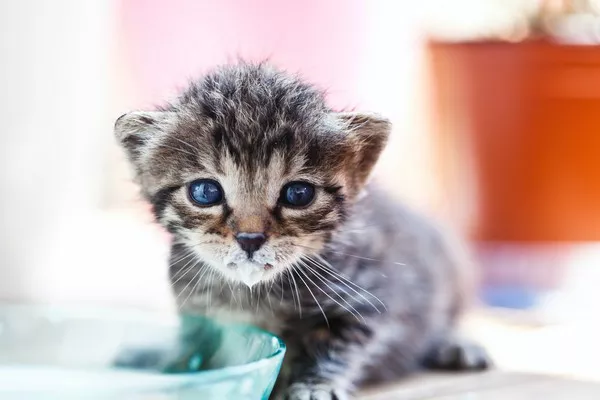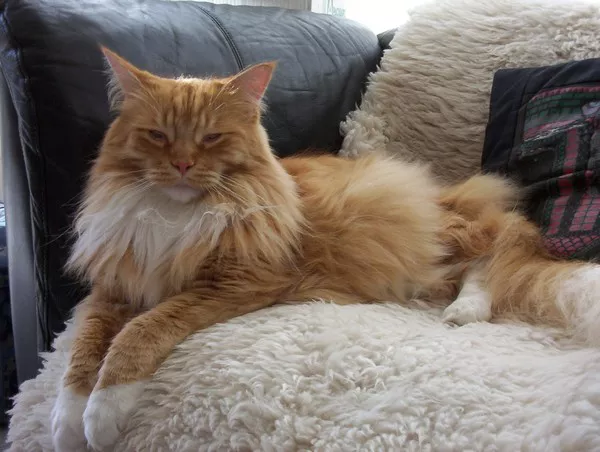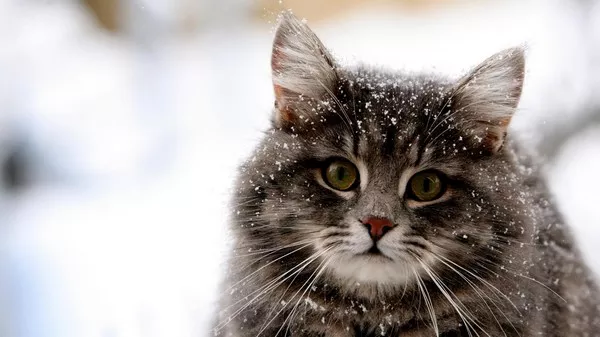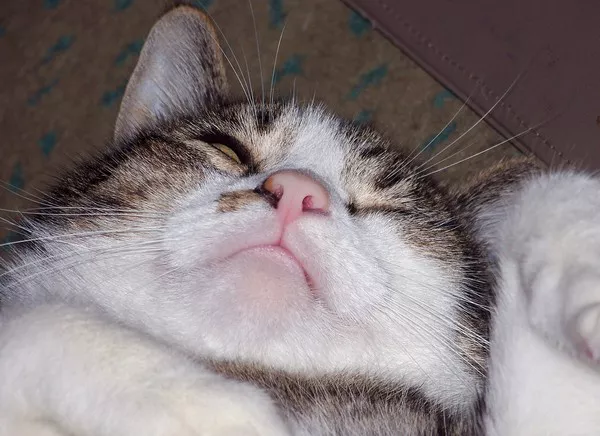Tricolor cats, often referred to as calico cats, are renowned for their striking coats that typically feature a combination of white, black, and orange (or cream). This unique coloration is not restricted to a specific breed; rather, it can be found across various breeds, each contributing its own characteristics and personality traits to the mix. Understanding the different breeds of tricolor cats not only enhances our appreciation for these beautiful felines but also helps potential cat owners make informed decisions when selecting a companion.
In this essay, we will explore the various breeds that can exhibit tricolor patterns, examining their unique traits, temperaments, and care requirements. By delving into the world of tricolor cats, we aim to provide a comprehensive understanding of these captivating creatures and the diversity they represent within the feline family.
Understanding Tricolor Patterns
What Are Tricolor Cats?
Tricolor cats are defined by their distinctive coat patterns, which typically include three colors: white, black, and orange (or cream). This combination creates a visually striking appearance that has made them popular among cat lovers. While “tricolor” is often used interchangeably with “calico,” it is important to note that not all tricolor cats exhibit the same patterns or color distributions.
The Genetics of Tricolor Coats
The genetics of coat color in cats is complex and primarily influenced by the X chromosome. Female cats have two X chromosomes (XX), allowing them to express both the black and orange color genes. Male cats, with only one X chromosome (XY), are less likely to exhibit the tricolor pattern. As a result, the majority of tricolor cats are female, while male calico cats are rare and often result from genetic anomalies.
Variations in Tricolor Patterns
Tricolor cats can exhibit a variety of patterns, including:
Classic Calico: Features large patches of black, orange, and white.
Dilute Calico: Displays softer colors, such as gray, cream, and white.
Harlequin: Predominantly white with large patches of color.
Mitted: White on the paws and chest, with patches of black and orange.
Understanding these variations is crucial for recognizing the diversity within tricolor cats.
Breeds of Tricolor Cats
Tricolor patterns can be found in several cat breeds, each with its unique characteristics. Below, we will explore some of the most common breeds that can exhibit tricolor coats.
Domestic Shorthair
Overview
The Domestic Shorthair is one of the most common breeds that can display tricolor patterns. This breed is not a specific breed in itself but rather a category that encompasses a wide variety of mixed-breed cats with short coats.
Characteristics
Coat: The coat can come in various colors and patterns, including tricolor.
Temperament: Domestic Shorthairs are known for their friendly and adaptable nature. They tend to be playful and sociable, making them excellent family pets.
Care: They require regular grooming, especially during shedding seasons, and benefit from a balanced diet to maintain a healthy weight.
American Shorthair
Overview
The American Shorthair is a well-known breed that can also exhibit tricolor patterns. Originally bred for their hunting abilities, they are now cherished as companion animals.
Characteristics
Coat: Their coat is dense and comes in various colors, including tricolor.
Temperament: American Shorthairs are known for their easygoing and friendly demeanor. They are typically good with children and other pets.
Care: Regular grooming is necessary to keep their coat healthy, and they thrive on interactive play.
Calico Persian
Overview
The Calico Persian is a specific variation of the Persian breed, known for its long, luxurious coat and distinctive tricolor patterns.
Characteristics
Coat: The long, flowing coat can feature a beautiful mix of white, black, and orange.
Temperament: Persians are known for their calm and gentle nature. They enjoy a relaxed environment and are often content to lounge around.
Care: Their long fur requires regular grooming to prevent matting and tangles. They also require regular veterinary check-ups due to their flat faces, which can lead to respiratory issues.
Maine Coon
Overview
The Maine Coon is one of the largest domestic cat breeds and can also exhibit tricolor patterns. Known for their friendly and sociable nature, Maine Coons are often referred to as “gentle giants.”
Characteristics
Coat: Maine Coons have a thick, water-repellent coat that can come in various colors, including tricolor.
Temperament: They are known for their playful and affectionate personalities. Maine Coons are often good with children and other pets.
Care: Regular grooming is essential due to their long fur, and they require a balanced diet to support their large size.
Ragdoll
Overview
Ragdolls are a popular breed known for their striking blue eyes and affectionate nature. They can also exhibit tricolor patterns, particularly in their bicolor and mitted varieties.
Characteristics
Coat: Ragdolls have semi-long hair that is soft and silky. Their tricolor patterns can include white, black, and orange.
Temperament: Ragdolls are known for their docile and laid-back personalities. They are often referred to as “puppy-like” due to their tendency to follow their owners around.
Care: Regular grooming is necessary to prevent matting, and they thrive on human interaction and play.
Scottish Fold
Overview
The Scottish Fold is famous for its unique folded ears and round face. This breed can also display tricolor patterns.
Characteristics
Coat: Scottish Folds have a short or long coat that can come in various colors, including tricolor.
Temperament: They are known for their playful and affectionate nature. Scottish Folds are often sociable and enjoy being around people.
Care: Regular grooming is required, especially for long-haired varieties, and they benefit from interactive play to keep them mentally stimulated.
British Shorthair
Overview
The British Shorthair is a sturdy breed known for its round face and dense coat. While they are typically seen in solid colors, they can also exhibit tricolor patterns.
Characteristics
Coat: The British Shorthair has a plush, thick coat that can come in various colors, including tricolor.
Temperament: They are known for their calm and easygoing nature. British Shorthairs are often independent but enjoy companionship.
Care: Regular grooming is necessary to maintain their coat and prevent shedding.
Turkish Van
Overview
The Turkish Van is known for its love of water and unique color patterns. While they are most commonly seen in a white coat with colored patches, they can also exhibit tricolor patterns.
Characteristics
Coat: The Turkish Van has a semi-long coat that is water-resistant. Their tricolor patterns can include white with patches of black and orange.
Temperament: They are known for their playful and energetic nature. Turkish Vans are often described as “dog-like” due to their love of water and play.
Care: Regular grooming is necessary to keep their coat healthy, and they enjoy interactive play and mental stimulation.
Exotic Shorthair
Overview
The Exotic Shorthair is a short-haired version of the Persian breed, known for its round face and plush coat. They can also exhibit tricolor patterns.
Characteristics
Coat: Exotic Shorthairs have a dense, plush coat that can come in various colors, including tricolor.
Temperament: They are known for their affectionate and easygoing nature. Exotic Shorthairs enjoy being around people and are generally good with children.
Care: Regular grooming is necessary to maintain their coat, and they require regular veterinary check-ups due to their brachycephalic (flat-faced) structure.
Abyssinian
Overview
The Abyssinian is one of the oldest known cat breeds, characterized by its ticked coat and playful personality. While they are typically seen in a ruddy color, they can also exhibit tricolor patterns.
Characteristics
Coat: The Abyssinian has a short, fine coat that can come in various colors, including tricolor.
Temperament: They are known for their playful and active nature. Abyssinians are highly curious and enjoy interactive play.
Care: Minimal grooming is required, but they thrive on mental and physical stimulation.
Caring for Tricolor Cats
General Care Considerations
Regardless of breed, tricolor cats require basic care to ensure their health and well-being. Here are some general care considerations:
Nutrition
Providing a balanced diet is essential for maintaining a healthy weight and overall health. Consult with a veterinarian to determine the best diet for your cat’s age, weight, and activity level.
Grooming
Grooming needs vary by breed. Long-haired breeds require regular grooming to prevent matting, while short-haired breeds may need less frequent grooming. Regular brushing helps reduce shedding and keeps the coat healthy.
Veterinary Care
Regular veterinary check-ups are crucial for monitoring your cat’s health. Vaccinations, parasite prevention, and routine dental care can help prevent common health issues.
Breed-Specific Care
Each breed may have specific care requirements based on its characteristics. Here are some breed-specific considerations:
Persians and Exotic Shorthairs: Regular grooming is essential to prevent matting and maintain coat health. They also require regular veterinary check-ups due to their brachycephalic structure.
Maine Coons: Due to their large size, they require a balanced diet and regular exercise to maintain a healthy weight.
Ragdolls: They thrive on human interaction and require mental stimulation through play and companionship.
Conclusion
Tricolor cats are a captivating group of felines that come in various breeds, each with its unique characteristics and personality traits. From the playful Domestic Shorthair to the elegant Persian, tricolor patterns can be found in a diverse array of breeds, showcasing the beauty and diversity of these remarkable animals.
Understanding the different breeds of tricolor cats allows potential cat owners to make informed decisions when choosing a feline companion. By recognizing the unique traits and care requirements of each breed, we can provide the best possible environment for our tricolor friends, ensuring they lead happy and healthy lives.
As we celebrate the beauty and individuality of tricolor cats, let us appreciate the joy they bring into our lives and the unique bond we share with them. Whether you are a seasoned cat owner or a first-time adopter, the world of tricolor cats offers a wealth of love, companionship, and delight.
Related topic:

























